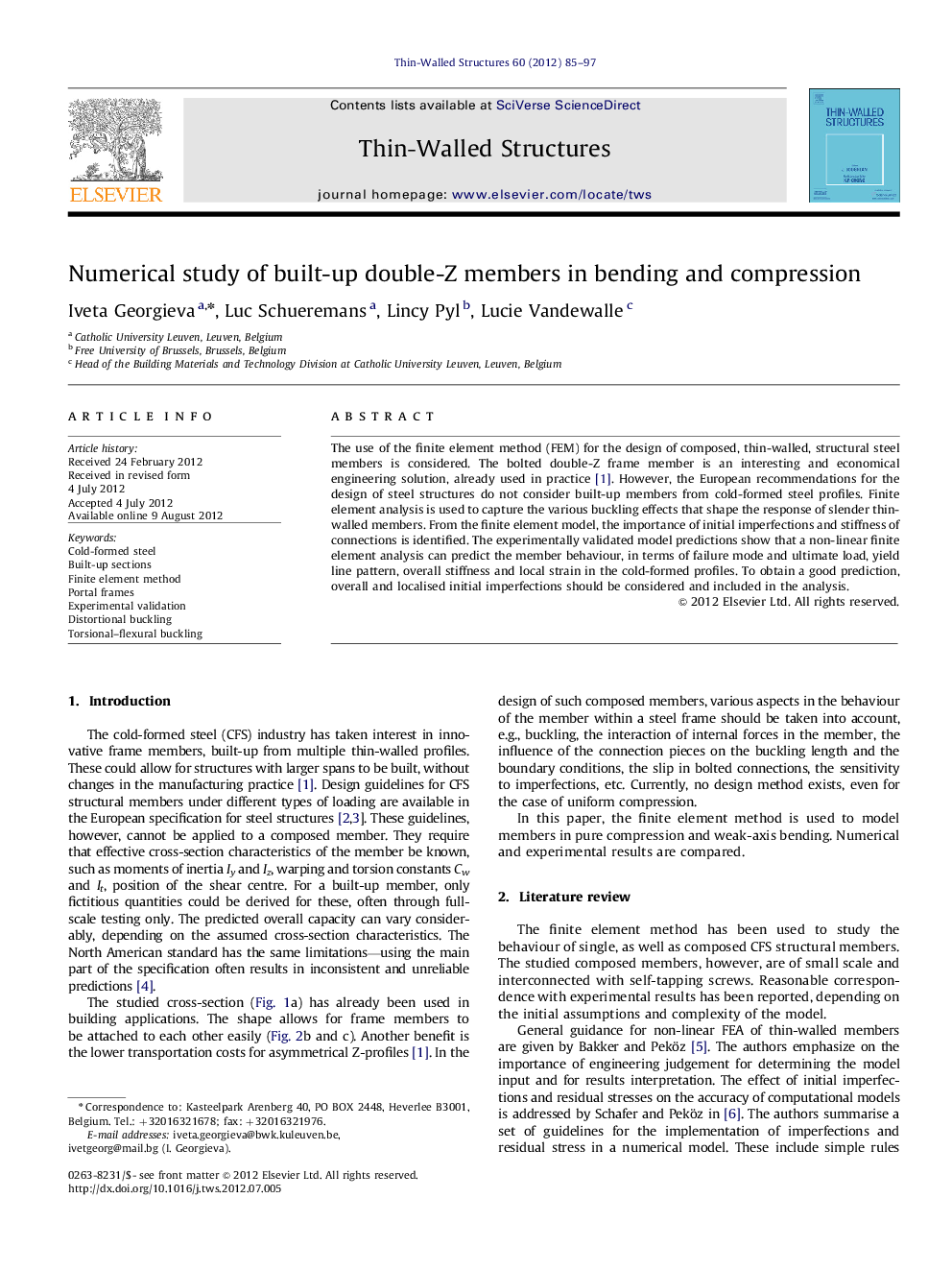| Article ID | Journal | Published Year | Pages | File Type |
|---|---|---|---|---|
| 309173 | Thin-Walled Structures | 2012 | 13 Pages |
The use of the finite element method (FEM) for the design of composed, thin-walled, structural steel members is considered. The bolted double-Z frame member is an interesting and economical engineering solution, already used in practice [1]. However, the European recommendations for the design of steel structures do not consider built-up members from cold-formed steel profiles. Finite element analysis is used to capture the various buckling effects that shape the response of slender thin-walled members. From the finite element model, the importance of initial imperfections and stiffness of connections is identified. The experimentally validated model predictions show that a non-linear finite element analysis can predict the member behaviour, in terms of failure mode and ultimate load, yield line pattern, overall stiffness and local strain in the cold-formed profiles. To obtain a good prediction, overall and localised initial imperfections should be considered and included in the analysis.
► Built-up cold formed steel members from Z-profiles are investigated. ► Finite element simulations are performed to study the behaviour of the members. ► The model input is explained and results are compared to tests. ► Load–displacemetn history and local strains from model and tests are compared. ► Modelling guidelines are given for other types of built-up members from CFS profiles.
